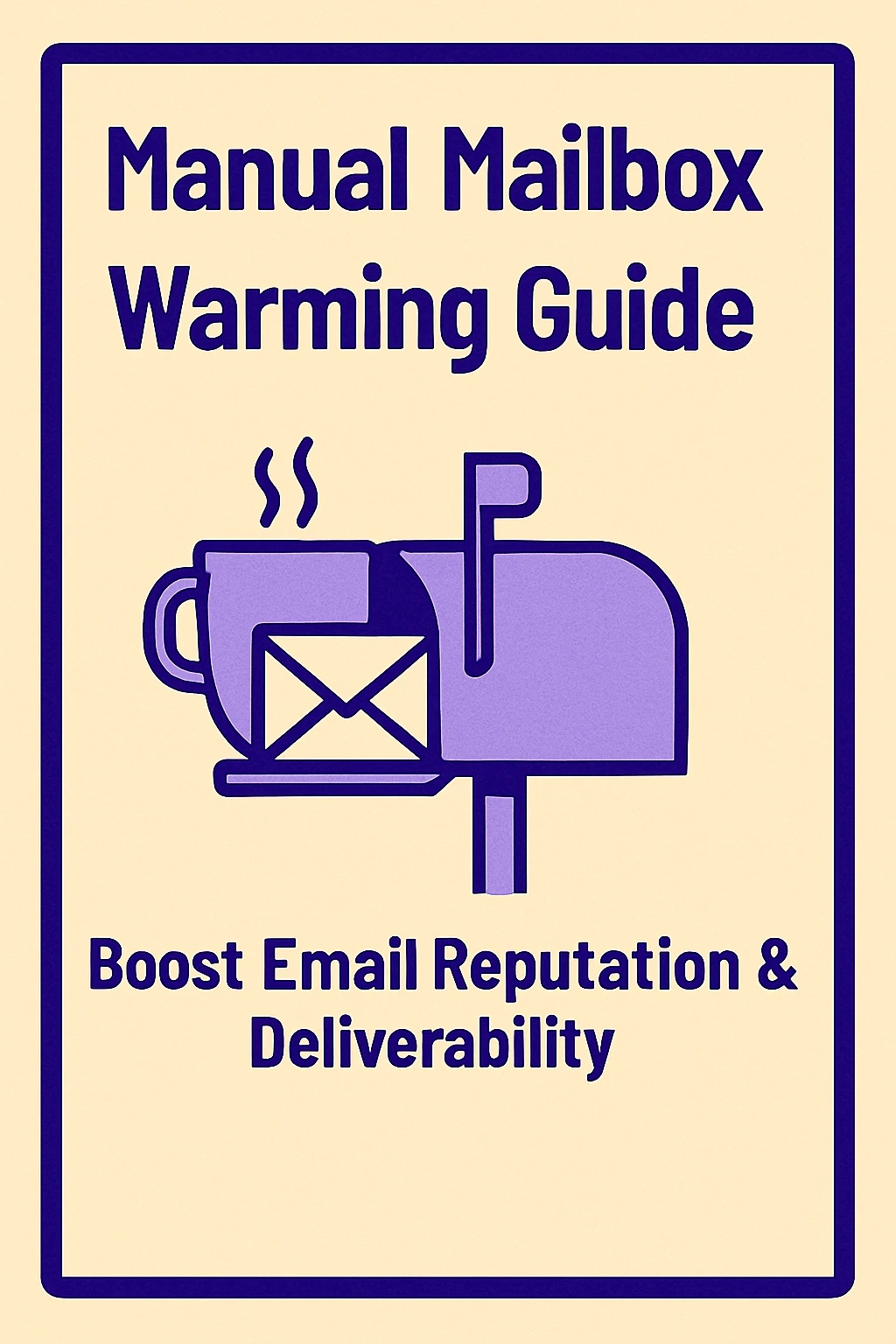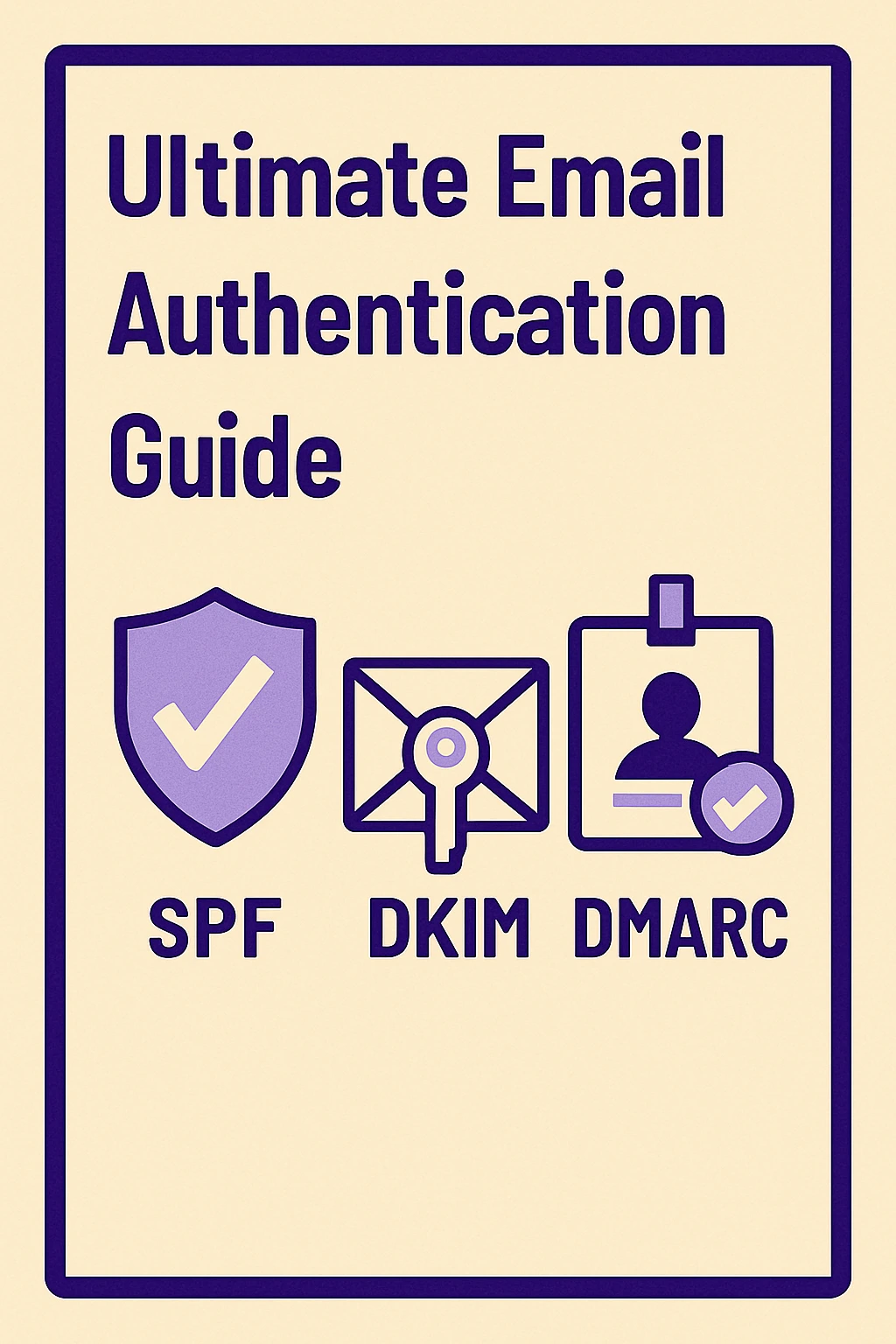Email List Hygiene 2025: Clean Lists. Real Results.
In 2025, email success depends on more than catchy subject lines—it starts with a clean, healthy list. This article explores why Email List Hygiene 2025 is a must for any serious sender. From rising compliance pressures to the cost of poor list maintenance, we break down how outdated emails, bounces, and spam complaints can damage both your deliverability and your brand reputation. You’ll learn how list hygiene has evolved with real-time validation, smarter automation, and better integration across platforms. We also dive into how global privacy laws like GDPR and CAN-SPAM demand airtight consent and proper data handling. Most importantly, we highlight how today’s top email infrastructure platforms—including MailKarma.ai, InfraForge, Mailreef, and Mission Inbox—help businesses keep their lists clean, compliant, and high-performing. The article ends with best practices, tool comparisons, and FAQs to help marketers stay legally safe, boost inbox placement, and keep engagement strong. If email matters to your business, list hygiene should be non-negotiable. This guide shows you how to clean it, maintain it, and grow with confidence in 2025.
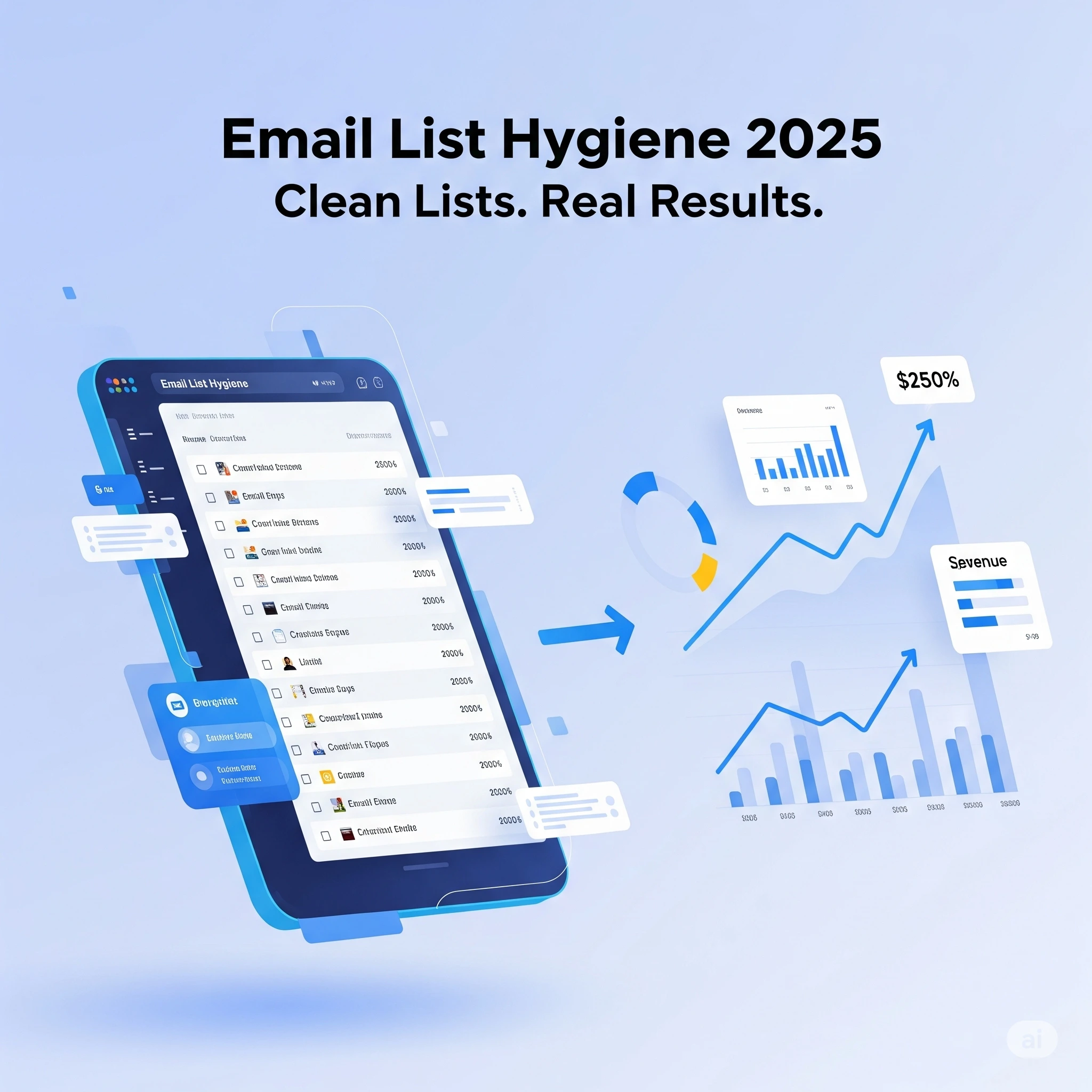
In 2025, email marketing success isn’t just about open rates or creative subject lines. It starts with your list. And not just any list—a clean, healthy one.
Email List Hygiene 2025 is all about keeping your contact data fresh, compliant, and ready to perform. Let’s face it: if you’re emailing people who never signed up, haven’t clicked in months, or no longer exist, you’re not just wasting time—you’re hurting your brand.
But here’s the good news: email infrastructure tools today make it easier than ever to manage your list without losing sleep. Let’s break it down.
Why Email List Hygiene Still Matters in 2025
The Rising Costs of Poor List Maintenance
Old emails, fake signups, and outdated addresses do more damage than most people realize. Every bad address chips away at your reputation. ISPs notice. Filters tighten. And soon, even your best campaigns end up in spam.
In short: bad lists cost real money.
Spam Complaints, Bounces & Delivery Failures
Ever had someone flag your message as spam? Even if you did nothing wrong, it only takes a few to damage your sender score. Now combine that with high bounce rates, and your deliverability takes a nosedive.
If your emails don’t make it to the inbox, none of your hard work matters.
Impact on Brand Reputation and Engagement
You work hard to build a trustworthy brand. But sending emails to the wrong people—or to no one at all—can erode that trust fast. A clean list keeps you talking to people who actually want to hear from you.
And that’s where connection begins.
What Is Email List Hygiene and How Has It Evolved?
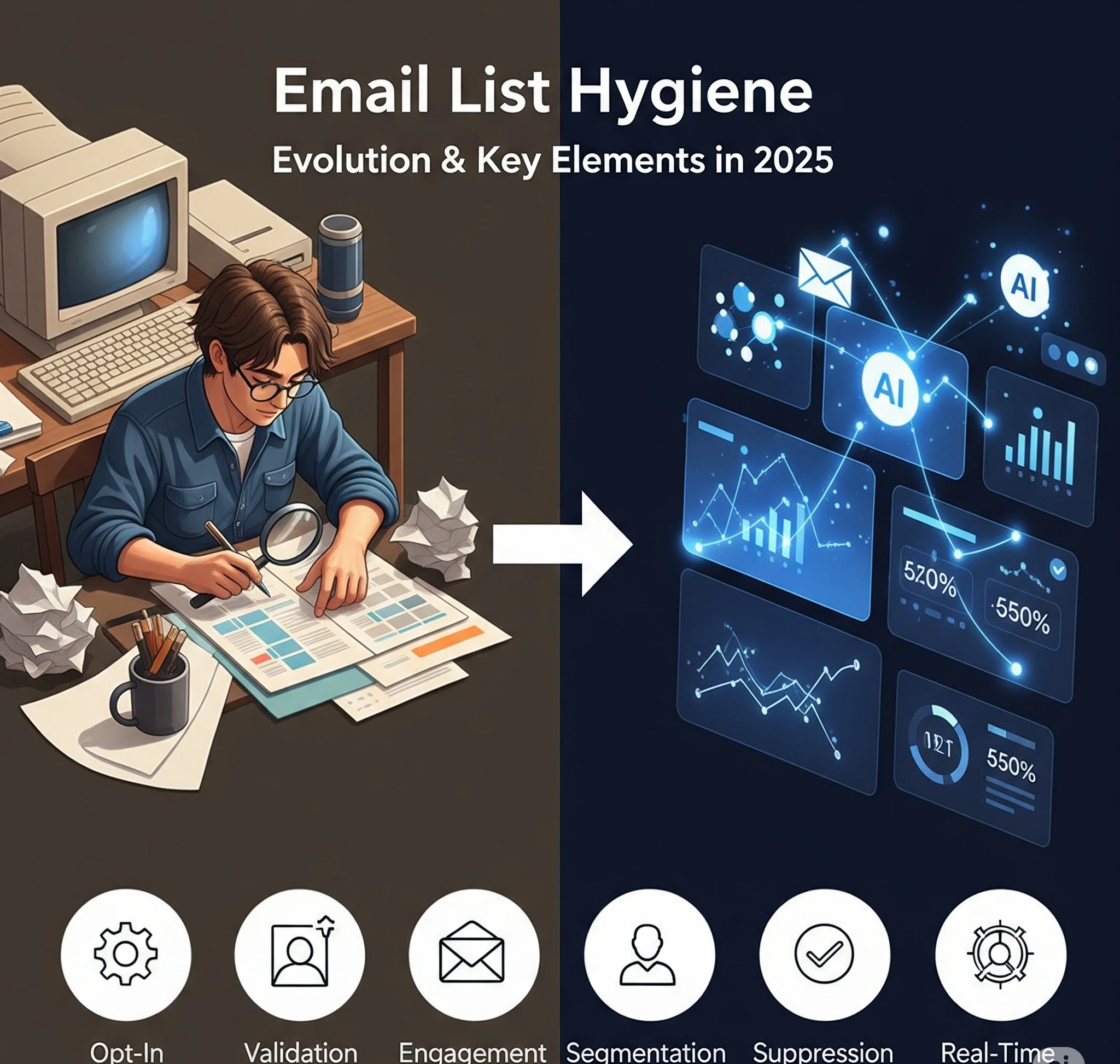
Key Elements of Email List Hygiene in 2025
Keeping a clean list in 2025 means going beyond just scrubbing bounced addresses. Here’s what matters now:
- Only email people who’ve clearly opted in
- Validate emails at signup to catch typos or bots
- Remove people who haven’t opened in 60+ days
- Segment based on how people interact with your emails
- Use suppression lists to avoid duplicate sends
The Role of Automation and Intelligence in List Cleaning
Ten years ago, list cleaning was manual. You’d export spreadsheets, run filters, and try to make sense of messy data. Today? Most of it happens behind the scenes.
Smart infrastructure platforms can now check emails in real time, flag inactive users, and even adjust send rates based on engagement.
From Manual Scrubbing to Real-Time Verification
Let’s say someone signs up and mistypes their email. In the past, that bad address would sit on your list until it bounced. Now? A real-time validation tool can catch the mistake right away—before it ever hits your system.
That one step alone saves you from potential headaches.
Compliance Is Non-Negotiable: Laws Shaping Email List Practices
In 2025, staying compliant with email marketing laws isn’t just a best practice—it’s a necessity. With increasing global focus on data privacy and consumer protection, failing to adhere to regulations can lead to hefty fines, damaged reputations, and lost business. Key laws like the GDPR (General Data Protection Regulation), CAN-SPAM Act, and CCPA (California Consumer Privacy Act) set the framework for how businesses can collect, store, and use customer data.
These regulations mandate that businesses only email individuals who have opted in, keep their data secure, and provide easy ways for recipients to unsubscribe. Email list hygiene and segmentation become crucial for ensuring that you're sending messages only to those who have consented. It’s not just about respecting privacy—it’s about building trust and long-term relationships with your audience.
Non-compliance could mean more than a bad reputation; it could mean fines or legal action. Therefore, maintaining clean, compliant lists, getting proper consent, offering easy opt-outs, and monitoring your campaigns for adherence to these laws is non-negotiable. In today’s market, compliance is a competitive advantage, and respecting consumer rights is critical to a successful, sustainable email marketing strategy.
GDPR, CAN-SPAM, CASL & Other Global Regulations
Rules around email have only gotten tighter. Whether you’re sending in the U.S., Europe, or anywhere else, you need permission to email someone—and you need to prove it.
GDPR, CAN-SPAM, and CASL don’t just suggest best practices. They enforce them. And ignoring those rules could mean steep fines or being blocked altogether.
How Email Infrastructure Tools Keep You Legally Safe
The best platforms today help you track who gave consent, when they signed up, and how to manage that data over time. You’ll know exactly when someone joined your list—and when they need to be removed.
Dynamic Consent Tracking and Data Retention
Consent isn’t just a checkbox anymore. Infrastructure tools store timestamps, IP addresses, and signup sources, so you always have a paper trail. Some even remove contacts automatically when they’ve hit your data retention limits.
How Email Infrastructure Platforms Help Maintain List Hygiene
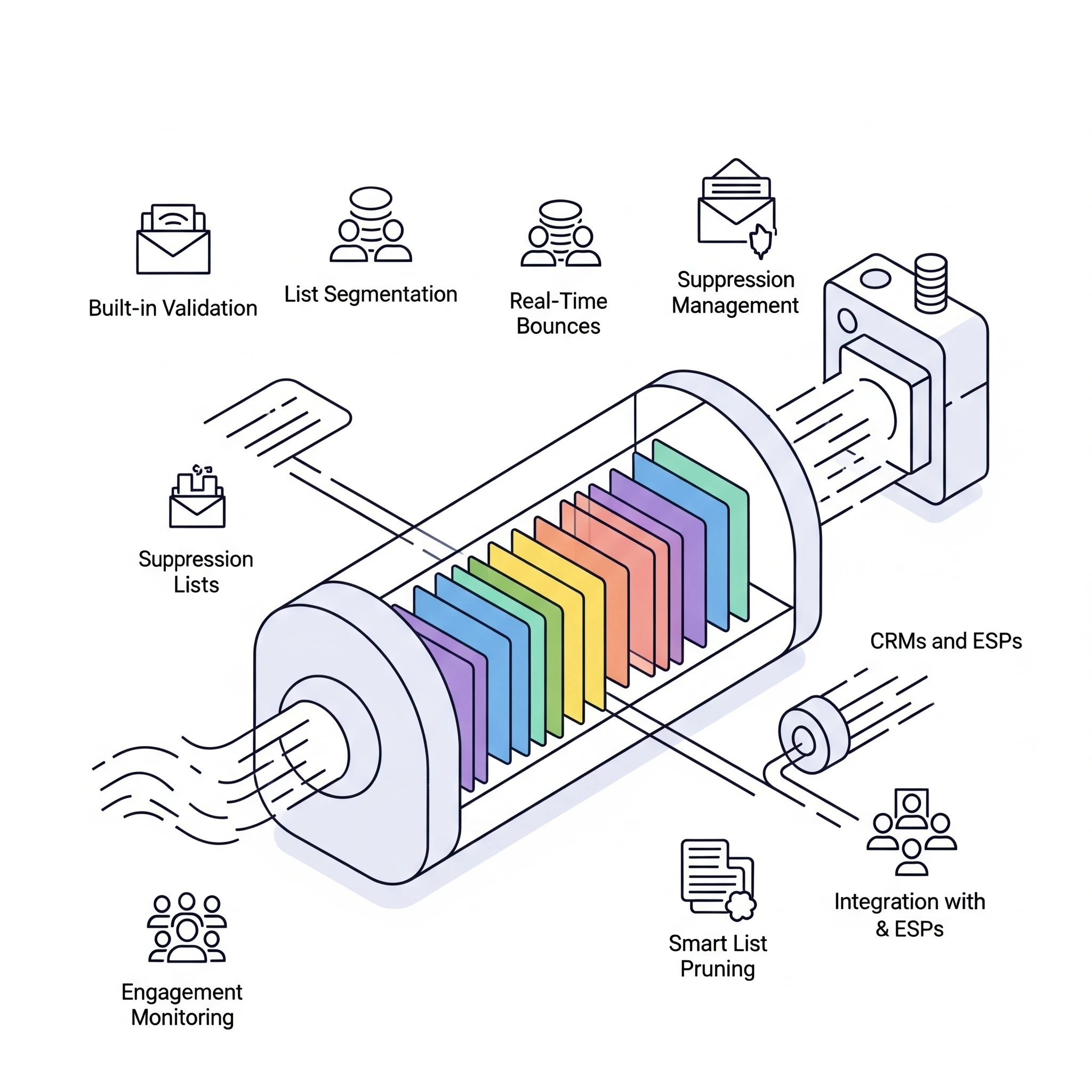
Email infrastructure platforms are essential in maintaining healthy, high-performing email lists. They provide the tools and features necessary to ensure your lists remain clean, compliant, and optimized for better deliverability and engagement. Here’s how these platforms help:
1. Automated Bounce Management
Email infrastructure platforms automatically track and handle bounces, whether they’re hard or soft bounces. By identifying invalid or outdated email addresses, these platforms prevent them from being sent to in future campaigns. This reduces your bounce rate, which improves your sender reputation and deliverability.
2. Spam Trap Detection
Platforms like MailKarma.ai and Mailgun can identify and warn you about spam traps, which are email addresses set up to catch spammers. Avoiding these traps keeps your domain and IP from being blacklisted, protecting your ability to send future emails without issues.
3. List Segmentation and Targeting
Email infrastructure platforms offer segmentation tools that let you group contacts based on engagement levels, preferences, or other criteria. This ensures you're sending relevant content to the right people and not overwhelming inactive subscribers, which keeps your list healthy and improves engagement rates.
4. Consent Management and Opt-In Tracking
Compliant platforms ensure you only send emails to users who have opted in. They help manage consent across regions, including the ability to track GDPR or CCPA opt-ins. This guarantees that you're following privacy laws and only reaching those who genuinely want to hear from you.
5. Unsubscribe Management
Maintaining an easy-to-find and functional unsubscribe option is a key part of list hygiene. Email platforms handle unsubscribe requests automatically, ensuring that contacts who no longer wish to receive emails are promptly removed from your list—helping to keep your list clean and compliant.
6. Engagement Tracking
Email platforms track user engagement (opens, clicks, responses) and allow you to remove or re-engage inactive subscribers. By monitoring engagement rates, you can clean out unengaged users who aren’t interacting with your content, thereby improving list quality and overall deliverability.
7. Integration with Data Validation Services
Some email infrastructure platforms integrate with third-party data validation services that ensure you're only sending to verified, deliverable email addresses. This is especially useful for large-scale campaigns, helping to ensure that your list is continuously optimized.
By automating and streamlining these processes, email infrastructure platforms ensure that your lists are always fresh, compliant, and optimized for performance. This helps protect your sender reputation, improve deliverability, and ultimately drive better results from your email campaigns.
Top Infrastructure Platforms That Support List Hygiene in 2025
MailKarma.ai
MailKarma.ai tracks your sender health, bounce rates, and engagement. It flags risky behavior early—before it hurts your inbox rates. It’s built for marketers who care about clean data and strong deliverability. Clean up your lists and protect your sender score with MailKarma.ai.
Key Features:
- Real-time inbox placement monitoring
- Reputation scoring and sender health tracking
- Spam trap detection
- Bounce type categorization
Pros:
- Provides detailed insights into deliverability and sender health
- Easy-to-understand reports for marketers of all skill levels
- Helps prevent domain blacklisting by identifying potential issues early
Cons:
- Might require a learning curve for those unfamiliar with deliverability metrics
- Limited in features compared to more all-in-one solutions for larger-scale businesses
Best For:
Marketers who want to improve deliverability and maintain list hygiene with real-time data and proactive alerts.
InfraForge
InfraForge is built for senders who need serious infrastructure support. It offers strong validation tools, bounce management, and throttling for smoother email performance. Perfect for teams that need to ensure high-volume campaigns stay compliant and effective.
Key Features:
- Smart throttling and sending rate control
- Bounce management with real-time feedback
- Strong authentication and IP warm-up tools
- Comprehensive reporting and diagnostics
Pros:
- High level of customization for specific deliverability needs
- Ideal for high-volume senders or those with large lists
- Built-in features for compliance and warm-up
Cons:
- More technical than other platforms; requires a strong understanding of email infrastructure
- May be overkill for smaller, less complex campaigns
Best For:
Large sales teams, SaaS platforms, and high-volume senders needing robust infrastructure and scalability.
Mailreef
Mailreef is all about simplicity. It helps prune dead contacts, monitor engagement, and suppress bounces—without the bells and whistles that slow you down. It's great for teams who want a streamlined approach to list hygiene and deliverability.
Key Features:
- Bounce suppression
- Engagement tracking and list pruning
- Simple, intuitive dashboard for easy list management
- Real-time alerts for engagement drops
Pros:
- User-friendly, even for non-technical users
- Focused on core deliverability tasks without unnecessary complexity
- Efficient for teams that need to maintain clean lists quickly
Cons:
- Lacks more advanced features like deep segmentation or A/B testing
- Limited integrations with CRMs or ESPs
Best For:
Small to mid-sized teams looking for an easy, no-frills solution to maintain list hygiene and improve deliverability.
Mission Inbox
Mission Inbox helps ensure your emails reach the inbox—not the spam folder. With smart throttling, list cleaning, and performance tracking, it’s a great tool for businesses that send frequently or at scale.
Key Features:
- Smart throttling to prevent ISP overload
- List cleaning and suppression management
- Daily deliverability benchmarking and performance tracking
- Spam folder testing across major email providers
Pros:
- Great for teams that send at scale or with high frequency
- Strong focus on deliverability and inbox placement
- Provides actionable insights into why emails fail to deliver
Cons:
- Primarily focused on deliverability, so lacks some advanced marketing automation features
- Might not be ideal for businesses with more complex email needs
Best For:
Businesses that send large volumes of emails regularly and need to ensure high deliverability and inbox placement.
Key Features to Look For in 2025 Tools
When selecting a platform for list hygiene and deliverability in 2025, make sure it includes these essential features:
- Instant email verification: Check for invalid email addresses in real-time.
- Automatic suppression list updates: Automatically remove unsubscribed or bounced contacts.
- Email throttling: Control sending speeds to prevent overwhelming ISPs.
- Consent tracking: Ensure your emails are compliant with opt-in regulations.
- CRM and ESP syncing: Seamlessly integrate with your CRM and Email Service Provider.
- Segment-based sending: Send targeted messages to specific segments to improve engagement.
By using these platforms and features, you'll ensure that your email list remains healthy, compliant, and optimized for high deliverability and engagement.
Email List Hygiene Best Practices for 2025
Regular List Cleaning and Verification
Don’t let junk pile up. Schedule regular checks every 30–60 days, and use real-time validation at sign-up to catch mistakes early.
Permission-Based Acquisition Only
If someone didn’t ask for your emails, don’t send them. It’s that simple. Bought lists and cold scraping do more harm than good.
Monitoring Engagement Signals and Removing Inactives
Set rules. If someone hasn’t clicked or opened in 90 days, consider removing them or putting them into a re-engagement campaign.
Throttling and Smart Sending Based on Activity
Send to your best contacts first. Slow down your sends to newer users or less active ones. This keeps your sending reputation healthy.
Conclusion: Your Clean List is Your Competitive Advantage
In 2025, maintaining a clean, well-managed email list isn't just a necessity—it's a competitive advantage. A healthy list means higher engagement, better deliverability, and ultimately, more successful sales campaigns. By using the right email infrastructure tools, you not only ensure compliance with regulations but also protect your sender reputation, optimize your outreach, and keep your messages out of the spam folder. Whether you're managing bounce rates, engaging with your audience, or making sure your data is clean and compliant, a strong email list hygiene strategy allows you to focus on what really matters—building relationships and driving conversions. Investing in your list today will pay off with stronger, more consistent results tomorrow. So, make your clean list a priority and turn it into your secret weapon for success.
Deliverability, Trust, and Legal Compliance Go Hand in Hand
Email success isn’t just about volume—it’s about quality. Clean lists reach more inboxes, drive more clicks, and keep you out of trouble.
Make List Hygiene a Core Strategy in 2025
Don’t wait for deliverability issues to hit. Keep your lists sharp, focused, and permission-based. It’s not just best practice—it’s how you stay competitive.
If you’re ready to simplify your list management and improve your results, start with MailKarma.ai. It’s built for senders who want cleaner data and better inbox reach.
Recap of Tools Mentioned
- MailKarma.ai – Excellent for monitoring sender health and keeping data clean
- InfraForge – Great for high-volume senders and strong infrastructure controls
- Mailreef – Lightweight, effective, and built for smart suppression
- Mission Inbox – Strong inbox placement support and list cleaning tools
FAQs: Email List Hygiene & Infrastructure Tools
What is email list hygiene and why is it important in 2025?
It’s the process of keeping your list full of real, permission-based contacts. Clean lists improve delivery and reduce legal risk.
Which email infrastructure platforms offer the best hygiene tools?
MailKarma.ai, InfraForge, Mailreef, and Mission Inbox all offer modern, built-in hygiene features.
How often should I clean my email list in 2025?
At least once a month. More if you send emails daily or weekly.
Can infrastructure tools automatically remove bad emails?
Yes. Most top tools can detect bounces and invalid addresses in real time.
What are the consequences of non-compliant email list practices?
You risk being blocked, fined, or flagged as spam. It also hurts your brand and inbox reach.
Recent Blogs
FAQs: Everything You’re Wondering About Cold Email Deliverability & MailKarma’s Infrastructure
MailKarma is a dedicated email infrastructure solution built exclusively for cold email outreach. Unlike shared inbox tools or general ESPs, MailKarma gives you complete control over your sending setup—private US IPs, clean domains, and expert-backed deliverability practices. Built by cold email pros, MailKarma is optimized to scale outreach without landing in spam.
Because MailKarma sets up private infrastructure—including custom domains and mailboxes—it doesn’t offer a traditional free trial. However, you can explore the platform, view your dashboard, and test features before provisioning infrastructure. Our private dedicated email servers cost $150 per server plus $0.001 per email sent, making it extremely cost-effective for high-volume cold email campaigns. For Gmail Workspace solutions, pricing starts at $3.50 per email with a 10-email minimum, dropping to $2.50 per email for volumes over 100 emails. This transparent pricing model ensures you only pay for what you use while maintaining enterprise-grade email deliverability.
Yes. MailKarma automatically sets up SPF, DKIM, and DMARC records using best-in-class standards. No technical hassle—our system handles everything behind the scenes, and our support team is always ready to assist if needed.
Every MailKarma subscription includes:
- Automated DNS setup (SPF, DKIM, DMARC)
- Private mailbox hosting
- Ongoing deliverability optimization
- Server monitoring and uptime guarantees
It depends on your monthly sending volume and the number of contacts per sequence. To simplify this, MailKarma includes a volume-based calculator inside the app to help you choose the optimal setup for scale, safety, and inbox placement.
Gmail and Outlook aren't built for cold outreach—they throttle volume, rotate IPs, and limit deliverability. MailKarma gives you:
- Dedicated infrastructure
- Warmed IPs and aged domains
- No shared resources
- Built-in best practices for cold outreach
It's the infrastructure your outreach actually needs.

.png)
